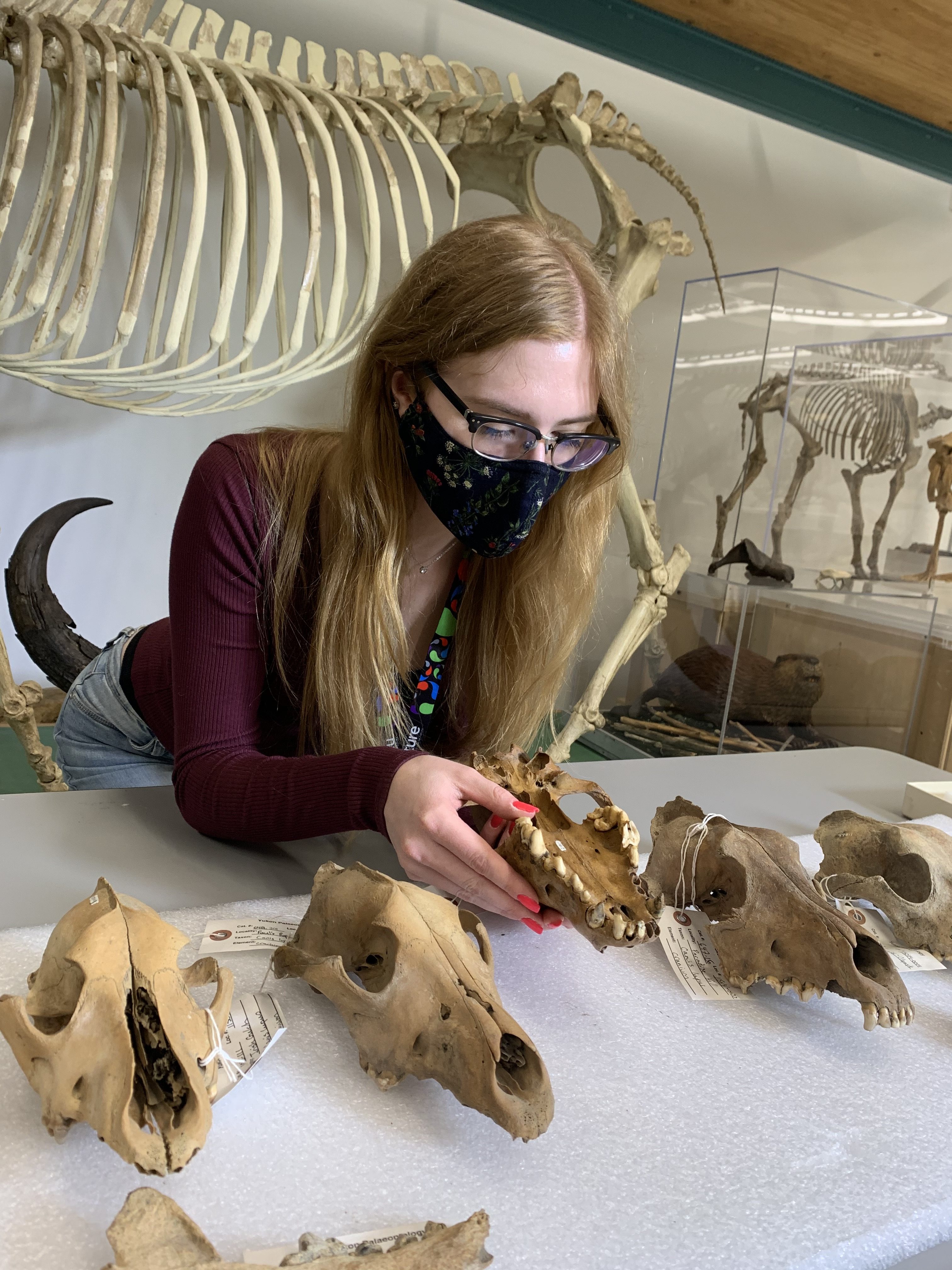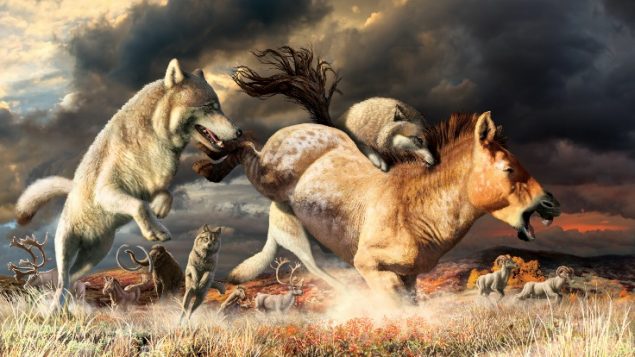Gray wolves are some of the largest predators that managed to survive the great extinction at the end of the last ice age and they may have succeeded by adapting what they ate. This is the conclusion of researchers at the Canadian Museum of Nature who have been comparing the teeth and bones of ancient gray wolves and their modern counterparts. All the specimens were collected in Canada’s northern Yukon territory which once supported the Beringia mammoth-steppe ecosystem.
“We can study the change in diet by examining wear patterns on the teeth and chemical traces in the wolf bones,” said Zoe Landry, the lead author of the study who completed the work as a Carleton University student. “These can tell us a lot about how the animal ate, and what the animal was eating throughout its life, up until about a few weeks before it died.”

Zoe Langry studied 40,000-year-old gray wolf skull specimens from the Government of Yukon collection. (Danielle Fraser/Canadian Museum of Nature)
Wear on teeth, makeup of bones revealing
Landry and museum paleontologist Danielle Frazer examined microscopic wear patterns on teeth and the makeup of bones to determine what the wolves of 50,000 to 26,000 years ago were eating.
Their analysis revealed that half of the gray wolves’ diet was horses which went extinct during the Pleistocene. About 15 per cent was from caribou and Dall’s sheep with a little mammoth mixed in. Over the years, the gray wolves began to eat more caribou and moose as their main food source and that resembles what their descendants eat today.
“The gray wolves showed flexibility in adapting to a changing climate and a shift in habitat from a steppe ecosystem to boreal forest,” explained Fraser. “And their survival is closely linked to the survival of prey species that they are able to eat.”
The results of this research are relevant for current conservation efforts, said the scientists. They suggest that preserving the declining caribou populations will be an important element in sustaining a healthy wolf population.
The study was published in the journal Palaeogeography, Palaeoclimatology, Palaeoecology.
The Canadian Museum of Nature states that it “curates more than 100,000 fossils in its national collections, including a significant representation of ice-age animals. By studying ice-age fossils, scientists can learn about the factors that allow a species to adapt to changes in the environment over time.”







For reasons beyond our control, and for an undetermined period of time, our comment section is now closed. However, our social networks remain open to your contributions.